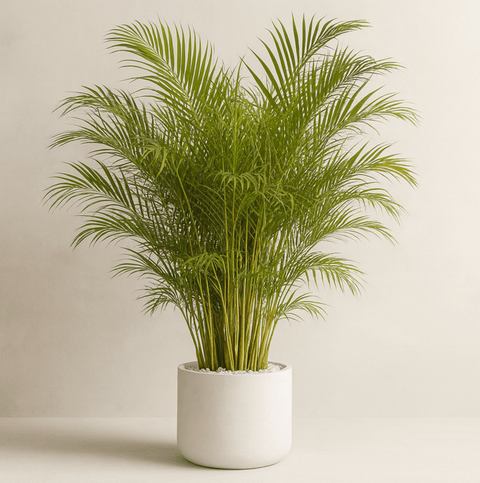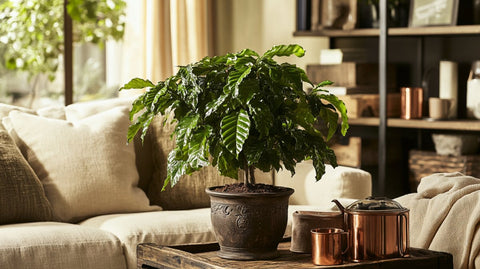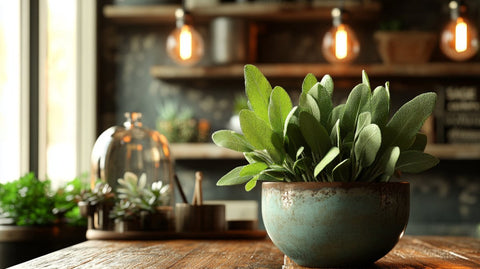Introduction
Hook the Reader
Welcome to the Sunshine State, where the climate is as diverse as its flora and fauna. Did you know that Florida is home to one of the most unique ecosystems in the United States, thanks to its abundant sunshine, high temperatures, and seasonal rainfall? This diverse climate makes it a fantastic place for vibrant gardens and lush landscapes.
However, choosing the right shrubs for your garden here is more than just a decorative decision. With the right selection of plants, you can create a resilient, sustainable, and stunning landscape that thrives in Florida's challenging conditions.

Purpose of the Blog Post
This comprehensive guide will equip you with the necessary knowledge to select, plant, and care for shrubs specifically suited to Florida's unique environment. From understanding the climate's impact on plant choice to mastering planting techniques and ongoing shrub maintenance, we cover everything you need to know. Plus, as an added bonus, we highlight some of our top choices from the Plantology collection that are perfectly suited for Florida gardens.
Understanding Florida's Climate and Soil
Overview of Florida’s Climate Zones
Florida's climate ranges from tropical in the south to subtropical in the north, presenting gardeners with a unique array of planting challenges and opportunities. Understanding the climate zone of your garden—whether it's the humid Gainesville area or the dry Miami metro—is essential when selecting plants.
Impact of the Climate on Plant Choices
When choosing shrubs for your Florida garden, it’s important to take note of the seasonal weather patterns that define the state's climate. The subtropical zones experience wet summers and mild winters, whereas tropical areas are much warmer and wetter. Plants need to be chosen according to their hardiness and ability to withstand these temperature and moisture shifts.
One critical consideration is the potential threat of hurricanes or tropical storms. Opt for sturdy, resilient species known for their wind resistance.
Soil Types in Florida
Florida’s soil varies across regions—from sandy coastal areas to loamy or clay-rich inland areas. Understanding your specific soil type is crucial in nutrient selection and soil amendment strategies to optimize plant health and growth. Soil tests can provide a clear picture of pH levels and nutrient deficiencies, guiding necessary adjustments.
Choosing the Right Shrubs for Your Florida Garden

Native vs. Non-native Shrubs
Native shrubs are adapted to the local climate and tend to be more resilient to pests and diseases. They require less water and maintenance, making them a sustainable choice for your garden.
However, non-native shrubs offer additional variety in terms of color, shape, and blooming patterns. When properly managed, they can complement and enhance native plantings. Visit Plantology to explore a range of native and non-native shrubs perfect for your garden!
Drought-Resistant Options
Florida gardens can face long, dry periods, especially in the spring. Selecting shrubs known for their drought resistance can reduce water usage and keep your garden lush even in dry months. Consider plants such as Agave or Variegated Agave, which are renowned for their ability to thrive with minimal watering.
Consideration of Sun and Shade Requirements
It’s vital to consider how much sunlight your garden receives throughout the day. While some shrubs flourish in full sun, others prefer partial shade. Placing your shrubs according to their preferred light conditions ensures they establish well and grow healthily. Always check specific needs when planning your garden layout.
Planting Techniques for Florida Shrubs
Preparing the Site
Assessing the Area
Before planting, assess the area to understand sunlight exposure, drainage patterns, and space. Clear any debris or competing weeds that might hinder plant growth.
Soil Preparation
For best results, amend the soil with organic matter to enhance its nutrient profile and improve drainage. Consider using compost or well-rotted manure. Such amendments increase microbial activity and promote strong root development.
Steps for Planting Shrubs
How to Dig a Proper Hole
Ensure that the hole is twice as wide and slightly deeper than the root ball. This allows roots to spread easily and establish well in their new habitat.
Placing the Shrub
Before planting, gently loosen the roots of the shrub to stimulate growth. Place the plant in the center of the hole, ensuring it stands in a vertical position, with the trunk straight.
Backfilling and Watering
Fill the hole back with soil, making sure to pack gently around the root ball to eliminate air pockets. Follow with a generous watering to settle the soil and start hydrating the roots.

Essential Care for Florida Shrubs
Watering Guidelines
Regular and deep watering helps establish a strong root system. Initially, water the shrubs frequently to ease the transplant shock. As they mature, slowly reduce watering frequency to encourage deeper root growth.
Fertilization Tips
Use a balanced, slow-release fertilizer suited to the specific nutrient need of your shrub varieties. Fertilize in spring and fall when your plants are actively growing, ensuring they have ample nutrients for robust health and bloom.
Pest and Disease Management
Maintaining garden hygiene and monitoring for pests and disease regularly is crucial. Remove any infected leaves or branches promptly, and use organic pest control methods where possible. A healthy garden is the first defense against infestations and disease.
Pruning and Trimming
Regular pruning not only keeps your shrubs healthy but also encourages new growth and improves blooms. Trim dead or overgrown branches and shape your plants to maintain the desired garden aesthetic.
Suggested Shrubs for Florida Gardens
Evergreen Shrubs
Evergreens are an excellent choice for year-round greenery and structure. Explore Plantology's selection of Aglaonema Silver Bay, which offers lush, vibrant foliage.
Flowering Shrubs
For blossoms that add color and fragrance to your garden, consider shrubs such as the Agapanthus Lily of the Nile. These beautiful plants thrive in Florida's climate and enhance any garden scene.
Specific Recommendations from Plantology
Check out our wide range of selections at Plantology for shrubs that fit your aesthetic and environmental needs. From Alexander Palms to other tropical varieties, you can find the ideal plants to bring your Florida garden to life.
Conclusion: Creating Your Florida Shrub Oasis
Summarizing Key Points
Planting shrubs in Florida requires an understanding of climate, soil, and plant types suited for the local environment. By choosing the right mix of native and non-native, drought-tolerant, sun-loving, or shade-preferring shrubs, you can craft a stunning, sustainable landscape.
Encouragement to Plan and Plant
With the knowledge gained from this guide, you are now ready to embark on your journey to create a vibrant garden oasis that fits the Florida lifestyle. Visit our Plantology online store to discover even more plant options and make your vision a reality!
Final Call to Action
Your ideal garden is only a click away! Head over to Plantology to start browsing your new favorite shrubs and other garden essentials today. Let your Florida garden flourish with Plantology.
``` ```htmlDiving Deeper into Florida's Shrubs

Exploring More Native Shrubs
Native shrubs are not just functional; they play a significant role in the local ecosystem by providing shelter and food for wildlife. Some beloved native shrubs that harmonize effortlessly with Florida’s biodiversity include the Simpson’s Stopper (Myrcianthes fragrans), known for its aromatic foliage and small, attractive flowers that attract pollinators. Another excellent choice is the Wax Myrtle (Morella cerifera), praised for its fragrant berries that serve as a food source for various bird species.
Adding to this list, the Beautyberry (Callicarpa americana) offers aesthetic appeal with its stunning clusters of bright purple berries and is a magnet for birds. Such native options ensure your garden is environmentally sound while maintaining visual charm.
The Role of Non-native Shrubs
While native shrubs have their benefits, non-native species can introduce a whole new realm of possibilities for aesthetics and diversity. When considering non-native options, it's vital to remain mindful of their potential invasiveness—opting for species that can coexist without threatening local flora.
Consider shrubs like the Hibiscus (Hibiscus rosa-sinensis), which brings an exotic flair with its large, vibrant flowers, and the Oleander (Nerium oleander), which thrives particularly well in warmer regions and offers a dramatic display of blooms. These shrubs can provide striking focal points and enhance the garden’s overall diversity.
Shrubs for All Seasons
A meticulously planned garden can provide interest all year long, regardless of the season. For this, incorporating a mix of evergreen, deciduous, and flowering shrubs ensures continuous variety. The evergreen Burford Holly (Ilex cornuta) retains its vibrant foliage and bright red berries throughout the year, while deciduous shrubs like Hydrangeas (Hydrangea macrophylla) offer lush, colorful blooms in the summer months.
Interspersing such classic varieties with perennial bloomers like Plumbago (Plumbago auriculata), known for its sky-blue flowers, adds depth to your garden. Additionally, the Japanese Camellia (Camellia japonica) injects winter beauty with its striking blossoms when few others are in bloom.
The Importance of Design and Layout
Creating Visual Balance in the Garden
Strategically planning the layout of your shrubs is crucial for creating a harmonious and balanced landscape. Consider elements such as color, height, and texture when planting. Grouping shrubs with complementary characteristics can create focal points and add depth to your garden.
For instance, zoning taller shrubs like the Podocarpus (Podocarpus macrophyllus) in the background provides a structural backdrop, while medium-sized options like the vibrantly colored Mexican Heather (Cuphea hyssopifolia) infuse a pop of color that draws the eye forward. Low-growing ground covers like Asiatic Jasmine (Trachelospermum asiaticum) anchor the design, filling in spaces and contributing to a cohesive look.

Sustainable Landscaping Practices
Sustainability is a key theme for modern landscapes, especially in Florida, where conservation is crucial due to environmental sensitivity. Implementing mulch, for instance, not only enhances the aesthetics of your garden but also helps retain soil moisture, suppress weeds, and regulate soil temperature. Organic mulches like pine bark or shredded leaves enrich the soil as they decompose, providing nutrients to your shrubs.
Moreover, integrating a rain garden—an area designed to absorb and filter rainwater runoff—can further contribute to a sustainable garden. By selecting appropriate drought-tolerant and water-absorbing shrubs and plants, you can reduce water waste and protect natural water bodies from stormwater pollutants.
Using Climatic Advantages
Florida's long growing seasons and favorable climate permit experimentation with a wider range of plant species. Taking advantage of this, gardeners can introduce exotic plants that wouldn’t normally thrive in harsher climates. However, it’s essential to remain aware of cold snaps and occasional frosts in the northern or central regions and choose frost-tolerant shrubs accordingly.
Opt for a mixture of hardy and delicate specimens, like the striking Bird of Paradise (Strelitzia reginae) alongside the robust Yucca (Yucca filamentosa), to take full advantage of Florida’s sunny climate while still being prepared for occasional climate variations.
Caring for Your Shrubs Throughout the Year
Seasonal Maintenance Tips
Caring for your shrubs involves understanding their specific seasonal needs. In spring, focus on removing winter debris and providing your plants with a nutrient boost using a balanced fertilizer to encourage new growth. As temperatures rise, adjust your watering habits during the hotter summer months to maintain hydration without overwatering.
In the fall, begin acclimating your shrubs to cooler temperatures by gradually reducing watering frequency. Pruning in late winter, before new growth starts, helps control their shape and size. Always use clean, sharp tools to prevent disease transmission during pruning activities.
Weather-Related Considerations
Severe weather events, like hurricanes, are a reality in Florida. Preparing your garden in anticipation of such events can minimize damage. Choose wind-resistant shrubs and secure young plants with stakes. After a storm, inspect plants for damage and address any issues promptly to prevent long-term effects.
Utilize sturdy plants such as the flexible yet resilient Sea Grape (Coccoloba uvifera) that can withstand salty winds and occasional flooding. Coastal gardens, in particular, benefit from plants with high salt tolerance, ensuring survival where other plant types might fail.

Preserving Biodiversity
Your garden can be a sanctuary for local wildlife, even in an urban setting. Opt for shrubs that provide food or nectar to attract beneficial insects and other creatures. Plants like the Firebush (Hamelia patens) and the Passionflower (Passiflora incarnata) draw butterflies, while bird-friendly options like the Viburnum (Viburnum obovatum) offer berries as sustenance.
Establishing these biodiversity-rich environments contributes positively to ecological balance, fosters pollination, and enriches your garden's overall vitality.
Expanding Your Knowledge and Resources
Further Learning and Gardening Communities
The gardening journey is continuous and ever-evolving. Engaging with local gardening communities or online forums like the Florida Native Plant Society can provide access to a wealth of shared experiences and advice. These resources are invaluable for staying updated on best practices, tackling regional challenges, and discovering new shrub varieties.
Additionally, our monthly newsletter from Plantology includes insights, tips, and exclusive promotions designed to support you in your journey to create the ultimate Florida garden.
Resources and Tools
Equip yourself with the right tools to make gardening tasks more manageable. Invest in high-quality, ergonomic tools for digging, pruning, and planting, ensuring comfort and effectiveness. Consider using technology such as smart drip irrigation systems to optimize watering schedules tailored to each plant’s needs.
Leverage apps like PlantSnap or Gardenate to identify plants or track planting schedules, enhancing your gardening efficiency and increasing success rates in maintaining healthy shrubs.
Conclusion: Flourishing Gardens, Flourishing Lives

The Endless Possibilities of Planting in Florida
The Florida gardening landscape offers a canvas with seemingly limitless possibilities. With an understanding of climate, soil conditions, plant diversity, and sustainable practices, it’s possible to craft vibrant gardens that bring beauty and joy throughout the year.
Support and Inspire Others
Sharing your gardening journey with friends and community members can inspire others to embark on their own plant adventures. By exchanging tips, stories, and successes, together we foster a culture of environmental mindfulness and enjoyment. Challenge yourself to experiment, grow, and nurture not only your garden but also the collective green spirit.
Embrace Your Gardening Adventure
Embark on your shrub gardening adventure with confidence. Visit Plantology for a curated selection of plants and accessories designed to transform your space into a lush oasis. Let your passion for plants take root and watch as flourishing gardens lead to flourishing lives, one shrub at a time.
```






















Comments (0)
There are no comments for this article. Be the first one to leave a message!